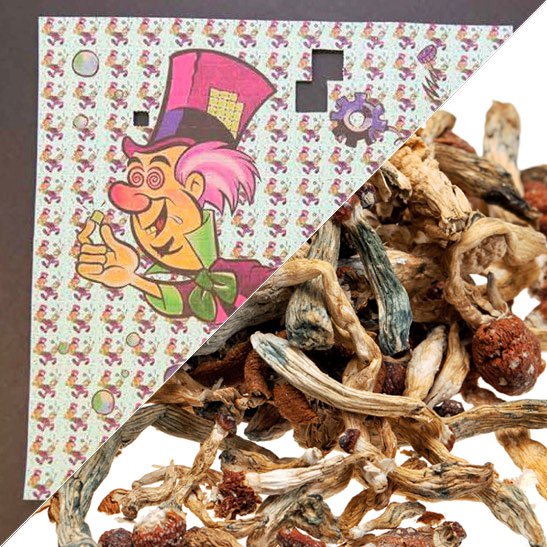Explore Valuable Insights About Golden Psycho You Didn’t Know.
Everything About Psychotomimetic Substances: Their Duty in Psychological Research
Psychotomimetic compounds, such as LSD and psilocybin, have actually garnered raising passion in mental research for their capability to duplicate psychotic signs and symptoms and provide understanding into different psychological wellness conditions. Their communications within the brain, particularly through serotonin and dopamine pathways, suggest a complex connection between consciousness and neurobiology that might open novel therapeutic opportunities. As scientists continue to examine their possible applications, honest factors to consider bordering their use in clinical setups come to be paramount, raising important concerns regarding safety and security and notified authorization that warrant additional exploration.
Interpretation of Psychotomimetic Substances
In the world of psychological study, psychotomimetic compounds are compounds that can induce impacts appearing like those of psychosis, such as hallucinations, delusions, and transformed perceptions of reality - About Golden Psycho. These substances can be identified right into various categories, including hallucinogens, dissociatives, and particular energizers, each producing distinctive emotional effects
The medicinal activity of psychotomimetic substances usually involves modulation of natural chemical systems, particularly those relevant to serotonin, dopamine, and glutamate. As an example, materials like lysergic acid diethylamide (LSD) mainly act upon serotonin receptors, causing profound changes in sensory understanding and cognition.
The energy of psychotomimetics in study hinges on their capacity to resemble psychotic signs, providing a version for understanding the hidden mechanisms of psychotic disorders such as schizophrenia. By researching the effects of these compounds, researchers can acquire understandings right into the neurobiological and mental processes that contribute to psychosis.
Moreover, psychotomimetic compounds have been checked out for their therapeutic possibility in treating different mental health and wellness conditions, including anxiety and anxiousness, highlighting their dual duty in both research and prospective medical applications.
Historic Advancement and Context
The expedition of psychotomimetic substances has a rich historical context that dates back to ancient people, where materials such as psilocybin mushrooms and peyote were utilized in spiritual and recovery practices. These very early uses typically intertwined with religious rituals, suggesting a profound respect for the altered states of awareness caused by these substances.
The mid-20th century marked a considerable switching factor in the research of psychotomimetic compounds, especially with the synthesis of LSD by Albert Hofmann in 1938. The subsequent popularization of LSD in the 1960s militarized a wave of rate of interest in both its emotional effects and potential therapeutic applications. Researchers began to explore exactly how these substances might imitate psychotic states, supplying insights right into mental disease.
However, the boosting organization of psychotomimetics with counterculture movements caused regulatory backlash, finishing in the criminalization of numerous of these substances. In spite of these obstacles, the revival of interest in the restorative potential of psychedelics in the 21st century has actually prompted restored study. This historic trajectory highlights the progressing perception of psychotomimetic have a peek here compounds, changing from spiritual compounds to topics of clinical query and, potentially, restorative promise.
Devices of Action
Understanding the systems of action of psychotomimetic compounds reveals the elaborate methods these compounds interact with the mind's neurochemistry. These substances largely exert their results through inflection of natural chemical systems, especially serotonin, dopamine, and glutamate.
In enhancement to serotonin, dopaminergic pathways are substantially affected by compounds like mescaline and certain cannabinoids, which can bring about transformed states of awareness and modifications in mood and motivation. The NMDA receptor antagonism observed with materials like ketamine highlights an additional pathway via which psychotomimetics might cause dissociative states and profound alterations in believed processes.
The neurochemical waterfalls initiated by these communications cause facility and complex mental impacts. Understanding these devices is critical for both the development of psychological research and the therapeutic potential of psychotomimetic substances, as they offer understandings into the underlying neural correlates of transformed states of awareness.
Current Research Study and Applications
Current investigations right into psychotomimetic substances have actually disclosed a renewal of rate of interest in their restorative applications, specifically in the fields of psychiatry and psychology. Researchers have actually started checking out materials such as psilocybin, LSD, and ayahuasca for their potential to relieve signs and symptoms connected with various mental wellness conditions, including anxiety, stress and anxiety, and PTSD.
Medical trials have actually shown that, when this hyperlink provided in controlled atmospheres, these substances can facilitate extensive psychological experiences, advertising emotional breakthroughs and boosted therapeutic end results. For instance, researches have revealed that psilocybin-assisted treatment can lead to considerable decreases in treatment-resistant clinical depression, with results lasting for several months post-treatment.
Furthermore, psychotomimetic compounds are being assessed for their ability to promote neuroplasticity, potentially permitting more efficient rewiring of maladaptive thought patterns. These searchings for suggest that such substances may work as adjuncts to standard psychotherapeutic approaches, improving the efficacy of therapeutic treatments.
As study progresses, the focus is changing towards understanding the optimum dosages, healing settings, and participant attributes that can take full advantage of the advantages of these substances. This growing area holds assurance for reinventing mental wellness treatment paradigms and attending to the limitations of standard psychological medications.
Moral Factors To Consider in Research

Navigating the moral landscape of research study entailing psychotomimetic compounds is critical to making sure individual safety and security and the integrity of study outcomes. Researchers should focus on enlightened consent, making certain that participants totally comprehend the possible threats and advantages connected with the materials being studied. This includes providing detailed details regarding possible mental results, including intense and long-term influences, and permitting participants the possibility to withdraw from the study any time scot-free.
Additionally, honest oversight by institutional testimonial boards (IRBs) is important. IRBs assess research procedures to guard participant welfare and maintain moral requirements. This analysis aids alleviate threats and ensures that research studies are carried out with scientific roughness. Furthermore, the possibility for threat should be meticulously assessed, particularly when at risk populations are entailed.
Privacy is another paramount factor to consider. Scientists have to apply durable procedures to shield participants' identifications and information, especially given the sensitive nature of experiences linked with psychotomimetic compounds (About Golden Psycho). Ultimately, a dedication to ethical techniques not just cultivates depend on between researchers and individuals but also enhances the credibility and legitimacy of the study end results, adding to the innovation of psychological expertise

Final Thought
To conclude, psychotomimetic substances, specifically timeless psychedelics such as LSD and psilocybin, deal significant insights into mental conditions via their special mechanisms of activity. Their therapeutic possibility in attending to conditions like anxiety and PTSD underscores the significance of continued study in this field. Guaranteeing ethical requirements in research practices is vital for participant safety and security and informed consent, enabling for a liable expedition of these compounds' benefits Our site and implications within emotional scientific research.